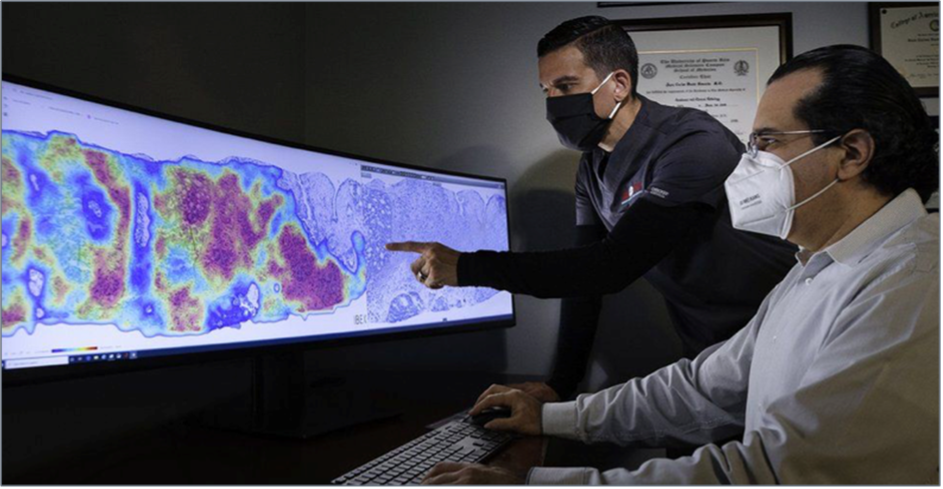Contracts for Innovation: International Rail Innovation Challenges
Organisations can apply for a share of £500,000, inclusive of VAT, to deliver feasibility studies addressing international rail challenges.
Opportunity Details
When
Registration Opens
23/09/2024
Registration Closes
16/10/2024
Award
Contracts will be up to £50,000, inclusive of VAT, for each project for up to three months. We expect to fund between 10 and 25 projects.
Organisation
DBT
This is a Contracts for Innovation competition funded by the Department for Business and Trade. The scope for this competition has been defined with the close collaboration of the Global Centre of Rail Excellence (GCRE).
The aim of the competition is to deliver feasibility studies to address the challenges of building and operating a wide range of international rail projects across the globe.
This is a single phase competition with a potential Phase 2 at a later date. Phase 2 is not currently planned at this time. Any future decision to proceed with Phase 2 will depend on the outcomes from Phase 1 and assessment of a separate application into a subsequent Phase 2 competition. Only the successful applicants from Phase 1 will be invited to apply to take part in Phase 2, should this go ahead in the future.
Your project can focus on one or more of the 22 specific themes from the four groups listed below: you must indicate which single theme your project most closely aligns to.
Click here to watch the recorded briefing for the competition.
-
To lead a project, you can:
- be an organisation of any size
- work alone or with the subcontracted skills and expertise of others from business, research organisations, research and technology organisations, or the third sector (charities, social enterprises and voluntary groups)
Contracts will be awarded to a single legal entity only. The majority of the project work and key deliverables must be completed by the applicant and be carried out in the UK. Subcontractors can be used, but only for specialist skills.
Contracts for Innovation competitions are open to all eligible organisations that can demonstrate a route to market for their solution. Under current regulations, Contracts for Innovation contracts are open to applications from organisations registered in the UK, European Union (EU) and the European Economic Area (EEA). Developments are 100% funded and focused on specific identified needs, increasing the chance of exploitation.
-
Projects must:
- start on 1 January 2025
- end by 31 March 2025; all spend must be completed by this date
- last up to three months
- have costs of between £5,000 and £50,000, inclusive of VAT
Your application must have at least 50% of the contract value attributed directly and exclusively to R&D services, including solution exploration and design. R&D can also include prototyping and field-testing the product or service.
Your project can focus on one or more of the specific themes listed below: however you must indicate which single theme your project most closely aligns to.
-
The aim of this competition is to deliver feasibility studies to address the challenges of building and operating a wide range of international rail projects across the globe.
The contents of each feasibility study for final deliverables must include:
- executive summary
- description of product or service
- technical considerations
- marketplace and financial feasibility
- marketing strategy, including requirement for further development and demonstration
- organisational feasibility
- delivery schedule
- draft specification of proposed product or solution
- conclusion and recommendations
In addition you must provide an outline of how you will demonstrate your technology at a railway test centre, for example, Global Centre of Rail Excellence (GCRE).
You must demonstrate a credible and practical future route to market. This means your application must include a plan to commercialise your results once your innovation is fully developed. Preference may be given to projects that can identify a specific customer for the proposed innovation. In addition, teams are encouraged to involve this organisation directly in the project, for instance as a subcontractor.
-
Infrastructure
Theme 1
- provide innovations to support the proactive dispatch of the cleaning crew to streamline the maintenance routines and avoid delays when wind-blown contaminants, including debris, sand, vegetation and other materials, encroach on the network
Theme 2
- investigate and provide solutions for efficient and cost effective methods for controlling wind-blown contaminants, including debris, sand, vegetation and other materials, and prevent them encroaching onto the track, for example, using fences, ditches and berms, landscaping or a range of other possibilities
Theme 3
- when handling aggregates, provide solutions that jointly minimise the maintenance of key components in the terminal resulting from wear and tear, and the degradation of the properties of the aggregates themselves, preferably with non-engineering interventions that are low cost
Theme 4
- investigate and provide an approach to deliver high quality but low cost track inspection from onboard commercial services
- include monitoring of factors which are specific to the local environment, for example, contaminant build up, including debris, sand, vegetation and other materials, in addition to detecting other defects such as metal fatigue and surface defects
Theme 5
- provide a non-intrusive approach to monitor the geotechnical stability around rail infrastructure, ideally to include predictive analysis that advises of any future movement to allow for actions to be taken
Theme 6
- exploit the optical fibres laid along modern rail networks and use advanced data analysis capabilities that allow an understanding of the information in the digital footprints contained within the data, including information on rolling stock and infrastructure
-
Theme 7
- provide innovative software to assess the clearance between non-standard cargo and existing infrastructure along the railway
Theme 8
- provide innovative solutions to effect rapid repair of railway infrastructure when damaged by natural or deliberate events, including conflicts, to allow restoration of services in as short a period of time as possible
Theme 9
- investigate a solution to ensure the hatches of freight wagons and locking points for containers are fully closed before a train starts its journey
- consider solutions that are non-intrusive, do not rely on additional sensors, and deliver a high degree of reliability with very low false alarm rates
Theme 10
- propose a strategy to inspect a train’s cargo while in motion, ensuring verification and clearance with minimal manual inspection, to facilitate seamless border controls
Theme 11
- provide an approach to streamline the inspection process for rolling stock, ideally while the train is in motion and before arriving at a depot
- ensure all required maintenance actions can be planned for completion immediately after arrival, reducing the operator’s risk and fatigue of manual inspections
- complete inspections automatically and automatically notify network managers, non-technical solutions may also be considered
Theme 12
- investigate and provide strategies to enhance the aerodynamics of the entire train set, particularly for intermodal services
- provide a cost benefit analysis to balance the costs of proposed solutions against the current baseline
- build upon previous studies, for example, looking at options for an aerodynamic non-functional container at the head of the train
-
Theme 13
- identify alternatives that capture the emissions from any fuel, your solution must be adaptable to different locomotives with minimal or no major modifications required
- propose innovations that do not require major modifications to locomotives, and provide carbon capture solutions for international railway operations
Theme 14
- explore sustainable solutions for construction materials to replace metal and concrete
- provide a scaled integration plan is essential, include a review of the decarbonisation of metal and concrete, and the use of alternative materials
Theme 15
- complete a strategic study that analyses and quantifies the best electrification approach for networks
- consider the changes and modifications required to the existing rolling stock, and the double-stacked clearance needed for freight container operations
- consider the design and operation of a pantograph and overhead line (OHL) electrification that operates at a height of 7 metres, along with a review of relevant standards, if any
- include innovations and standards relevant to the OHL above twin stacked containers
- provide a proposal for appropriate trials work to clear operations, include the issues of vehicle roll when operating under highly elevated overhead line equipment (OLE)
-
Theme 16
- provide an end-to-end feasibility study on the transportation of hydrogen by rail and road vehicles in a range of high potential nations interested in developing net-zero fuel options
- include aspects, for example, of transportation in the chemical form and for being transported in, wagon options, loading and unloading systems, safety analysis and options for the generation of hydrogen fuel
Theme 17
- provide a strategy to exploit testing facilities to seamlessly adopt and evaluate intrusive innovative solutions
- consider the costs and advantages of specialised facilities and tracks, possession frameworks, or any innovative approach that is fit for the target market
Theme 18
- provide solutions for revenue generation in the underutilised parking spaces at railway stations, perhaps during early years of operation of new stations, or at weekends
- potential solutions might consider low cost service offerings, alternative commercial uses that are scalable and flexible
Theme 19
- provide solutions to increase the resilience of railway infrastructure in the face of natural events or when exposed to the risk of deliberate damage, including conflicts
Theme 20
- find a cost effective and innovative approach to increase the axle load of current rolling stock, for example, modifying the bearings with advanced materials that can handle larger axial and radial loads
Theme 21
- in the context of passenger comfort, outline an onboard compact system to measure and analyse vibrations, dynamic behaviour and noise experienced in the passenger trains
- data must be geolocated, and the system must be able to discern the source of any undesired digital footprint, for example, track, bogie or vehicle body
- consider factors which might also enhance the customer perception of comfort, including non-mechanical solutions
Theme 22
- explore and propose innovations to make railway networks more resilient to natural disasters and single points of failure
- evidence how to reduce dependence on a workforce of transient specialists, solutions can be technical or non-technical
-
Click here to watch the recorded briefing for the competition. (There are some audio issues between 1′ and 18′ in the recording – we are working to fix these, apologies.)
Click here to download the briefing slides.
For queries about the competition, you are welcome to contact Ben Cullen, Innovate UK Business Connect’s KTM for Rail.
Related programme

Contracts for Innovation
Enabling innovators to work directly with the public sector to develop new technologies and processes.


